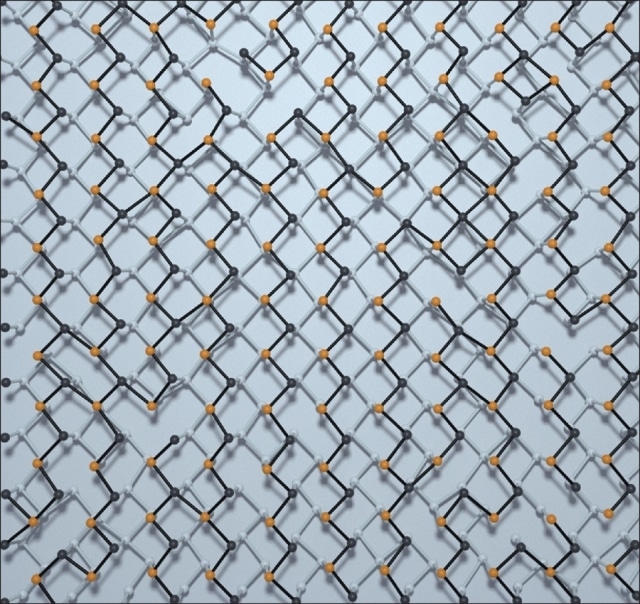Mar 16 2016
A research study, conducted at the University of Arkansas (U of A), has demonstrated that temperature can be employed to considerably change the behavior of 2D materials, which are now being explored for use in next-generation electronic devices.
 A tin selenide monochalcogenide monolayer at room temperature. (Courtesy of Edmund O. Harriss)
A tin selenide monochalcogenide monolayer at room temperature. (Courtesy of Edmund O. Harriss)
The study demonstrated that black phosphorous and monochalcogenide monolayers behave differently than other known 2D materials at any temperature, as the four ways to form atomistic arrangement compete with each other, leading to disorder, explained Salvador Barraza-Lopez, an assistant professor of physics at the U of A.
Remarkably, nobody had found that some of these 2D materials become disordered at a room temperature and well before they melt. At the transition temperature the unit cell transforms from a rectangle onto a square and all material properties change.
Salvador Barraza-Lopez, Assistant Professor of Physics, U of A
An international research group, led by Barraza-Lopez and Pradeep Kumar, assistant professor of physics at the U of A, published the results in Nano Letters, a journal of the American Chemical Society.
According to Barraza-Lopez, the black phosphorous and monochalcogenide monolayers become disordered at a fixed temperature.
At that moment, the structure transforms from a rectangle to a square and its behavior also changes.
Salvador Barraza-Lopez, Assistant Professor of Physics, U of A
Accessibility to the Trestles supercomputer at the Arkansas High Performance Computing Center was vital to the research study, Barraza-Lopez said.
Barraza-Lopez and Mehrshad Mehboudi ran several uninterrupted calculations on Trestles for approximately three weeks each. Mehboudi is a doctoral student in the university’s interdisciplinary microelectronics-photonics graduate program.
There is no way we could have achieved these results in the timeframe we did without Trestles.
Salvador Barraza-Lopez, Assistant Professor of Physics, U of A
Hugh Churchill, assistant professor of physics at the U of A, and Edmund Harriss, a clinical assistant professor in the U of A Department of Mathematical Sciences also contributed to the work.
Additional contributors were Arend van der Zande and Wenjuan Zhu of the University of Illinois, Alejandro A. Pacheco-Sanjuan of the Universidad Technica Federico Santa Maria in Chile, and Alex M. Dorio, an undergraduate at Oklahoma State University who participated in a Research for Undergraduates experience at the U of A last summer.